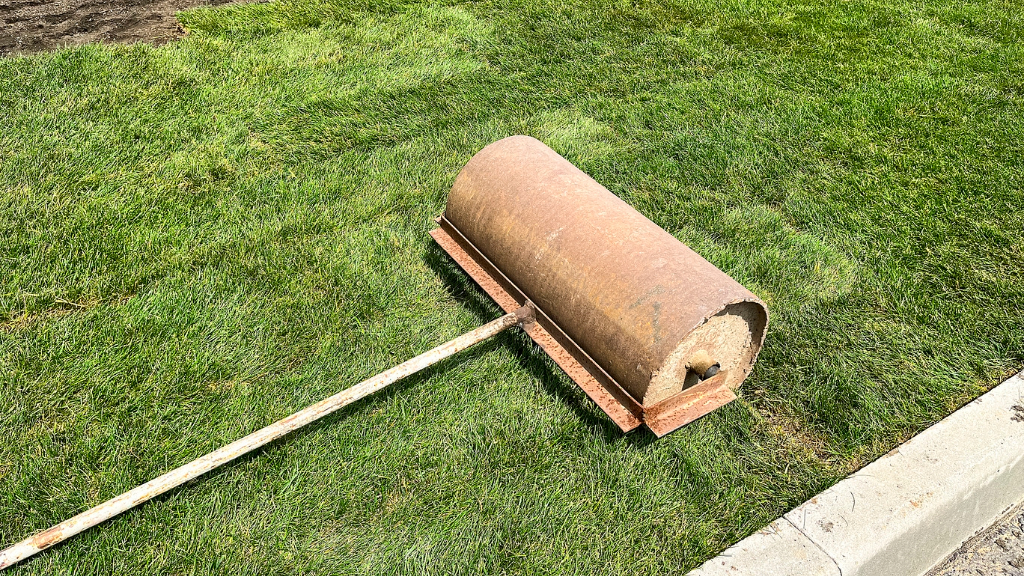Pros And Cons Of Lawn Rolling - Is Lawn Rolling Good Or Bad
As with most things there are both pros and cons of lawn rolling. Find out about lawn rolling benefits and detriments I've learned here.

Many folks think that lawn rolling each year is part of general maintenance, but not so fast. As with most things there are both pros and cons of lawn rolling. The answer to the questions "is lawn rolling good or bad?" or "does lawn rolling work?" isn't a simple yes or no answer. Read on to find out about lawn rolling benefits and detriments - things I've learned from my lawn aficionado better half.
Is Lawn Rolling Good or Bad?
As with many things, there are both pros and cons of lawn rolling. Or maybe a better way to put it is that there is a time and place to achieve lawn rolling benefits.
First off, the idea behind lawn rolling is to level out the surface of the soil upon which a lawn is grown. Sounds great in theory since lumpy lawns arise from normal freezing and thawing cycles and from mole hills and tunnels, but does lawn rolling really work?
Pros and Cons of Lawn Rolling
First off, we'll discuss lawn rolling benefits.
- Lawn rolling is useful in the spring when trying to level out minor bumps or uneven lawn areas. Prior to rolling the lawn, add a light top dressing.
- Lawn rolling is also useful for preparing a bare area for seeding. Use a light roller which will push the seed into the soil to ensure more even germination. Of course, seed can also be raked into the soil instead.
- A roller is also helpful when laying sod. It helps the sod take root and encourages the roots to grow deeper.
While there are lawn rolling benefits, there are also some disadvantages to consider. Lawns are many a homeowner's obsession and they take great care to create the perfect lawn, one worthy of a golf course. Just ask my hubby - he'll tell you all about it. The thing is, golf course turf is not only constantly maintained, but it is also laid down on a special sand base that does not compact. If the homeowner is attempting to attain the smooth turf of a golf course, a lawn roller may seem the ideal solution.
The problem? As you might assume, rolling a lawn also compacts the dirt beneath the grass which, in turn, prevents water from penetrating the soil and causes runoff, which takes with it any amendments from the turf and into the nearby sewer system. So instead of being beneficial, lawn rolling in the spring causes stress right off the bat at the beginning of the growing season.
On a golf course, the turf is rolled several times a week, but in conjunction with coring of the sod to allow for water and air penetration.
Sign up for the Gardening Know How newsletter today and receive a free copy of our e-book "How to Grow Delicious Tomatoes".
Does Lawn Rolling Work?
In the end, while lawn rolling is not necessary, it can be a useful maintenance tool provided you follow a few rules.
Use a lightweight water-filled roller so weight can easily be adjusted depending on the amount of water used. Start by filling only about a quarter of the roller with water and do a test run to see if this is sufficient to smooth out bumps. If not, gradually increase the water until you find the right weight, one that is enough to smooth the bumps but not compact the soil.
Use a lawn roller after you seed or sod the yard, after cold winters which caused soil heaving, and to correct small bumpy areas of the lawn. Lawn rolling is also beneficial if you are making a playing turf for putting, croquet or cricket.
Other than for these reasons, avoid lawn rolling. If you do decide this method is for you, do so in the early spring and roll the lawn when it is damp, not soaking wet. Never use a lawn roller if your soil is composed of heavy clay.

Amy Grant has been gardening for 30 years and writing for 15. A professional chef and caterer, Amy's area of expertise is culinary gardening.
